APL England Fittings in Poor Condition Prior to Containers Loss off Sydney
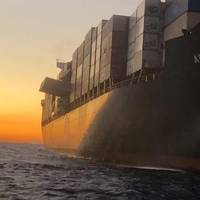
Fixed container securing arrangements on containership APL England were in poor state of repair and corroded prior to loss of dozens containers in heavy seas off Sydney, an Australian Transport Safety Bureau (ATSB) investigation found.The Singapore-flagged containership was making way down the east coast of Australia on May 24, 2020 when, in adverse weather, it underwent a series of heavy rolls that resulted in the loss of 50 containers overboard, and shutdown of the main engine.The…
Marine Learning Systems Renews Contract with Canadian Coast Guard

Marine Learning Systems (MLS) has renewed an existing contract with the Canadian Coast Guard to supply a maritime learning management system. Named SeaReady, the learning management system supports the Western Region of the Canadian Coast Guard by providing online training and assessment to operational and technical personnel.Following a fair and transparent process through Public Services and Procurement Canada, Marine Learning Systems was initially awarded the contract due to their ability to deliver learning and assessment tools to remote locations without reliance on internet connectivity.
Advanced AI Engine for Automated Blade Damage Detection
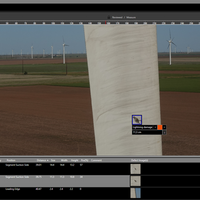
Sulzer Schmid, a Swiss company pioneering UAV technology for rotor blade inspections, and artificial intelligence (AI) specialist NNAISENSE have formed a partnership to develop an artificial intelligence engine to automatically detect rotor blade damages on wind turbines.The companies expect the new technology to bring the twin benefits of improving the productivity and consistency of blade inspection processes and are aiming to build the industry’s most powerful AI engine able to recognize damages based on inspection image material.
New Book on Ship Stability

To say this book is a collection of research would be an understatement. “Contemporary Ideas on Ship Stability: Risk of Capsizing” is more like a preservation of knowledge covering the last nine years.Dr. Vadim Belenky, a naval architect in the Simulations and Analysis Branch at Naval Surface Warfare Center, Carderock Division, was the editor in chief for the book, the chapters of which are papers from engineers, naval architects and professors from around the world. Belenky himself co-authored four of the papers…
DNV GL's Tørstad Talks Energy Trends

When Elisabeth Tørstad took the helm as CEO of DNV GL - Oil & Gas in late 2013, the price of a barrel of NYMEX (WTI) crude oil was more than $100. Today, that price has been halved, and the 40-month period between her ascension to the top post and our meeting with her in Houston in May 2017 has been arguably the most tumultuous in the oil industry’s history. Tørstad shares with Maritime Reporter & Engineering News her insights on the market going forward. With the energy slump entering its fourth year…
Preventive Strategies for Maritime Security
The importance of well-coordinated, risk-based preventive strategies to counter maritime security threats was highlighted by International Maritime Organization (IMO)'s Chris Trelawny, Special Adviser on Maritime Security and Facilitation, during a debate at the United Nations Security Council (13 February). The UN body, which has the responsibility for maintenance of international peace and security, adopted a resolution urging international collaboration to protect critical infrastructure from terrorist attacks. Speaking during the open debate, Trelawny highlighted IMO’s extensive programme of technical cooperation activities to assist Member States to develop capacity and capability to deter, prevent, detect and respond to security threats.
IRClass Releases IR-HULL Software
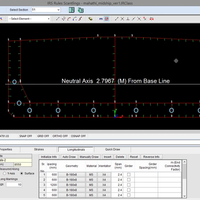
Indian classification society IRClass has released its new technical software, IR-HULL, which evaluates strength and scantling compliance for seagoing steel ships. IRClass said it specifically developed IR-HULL to verify all aspects of ship design compliance to its established rules and regulations for the construction and classification of steel ships. The software, available to ship owners, designers, consultants and shipyards, analyzes global strength (including both longitudinal and buckling strength) and local scantling for all panels and stiffeners in a vessel’s hull section.
IRClass Unveils IR-HULL Software
IRClass, the Indian classification society, today announced the release of its new technical software, IR-HULL. IR-HULL was developed by IRClass specifically to verify all aspects of ship design compliance to its established Rules and Regulations for the Construction and Classification of Steel Ships. The new IR-HULL software analyses global strength (including both longitudinal and buckling strength) and local scantling for all panels and stiffeners in a vessel’s hull section. IR-HULL is equipped with a user-friendly graphical interface and an intuitive modeller with CAD drawing tools to significantly reduce data entry time. “IR-HULL is agile, versatile, and can be simply applied to multiple ship types,” said Mr. Arun Sharma, Chairman and Managing Director of IRClass. Mr.
Spotlight: Cyber Risk Management
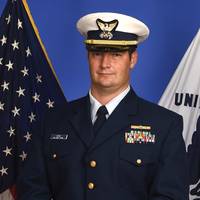
An increasing number of systems on ships and at marine facilities depend on cyber technologies for routine operations. While cyber technology has improved efficiencies in the marine industry and around the world, it has also created potential vulnerabilities. For example, the towboats that move goods through the Western Rivers and along our coasts rely heavily on electronic navigation systems, including Automatic Identification System (AIS) and Global Positioning System (GPS), to safely transit around riverbends, capes, and shoals.
How to Approach Maritime Cyber Security

Maritime security professionals understand the value of a layered approach to risk management. Cyber security posture continues to develop as a critical component of a maritime security strategy, and cyber security insurance has become a valuable layer of protection that risk managers must consider. While the insurance industry has decades or more of actuarial data on various kinds of risk (typhoons, tornados, earthquakes, etc.), no such substantive data exists yet for cyber risk.
EPA’s SmartWay Initiative Makes Way on the Water
Exhaustive studies by The National Waterways Foundation (NWF), a center for research and learning where industry leaders address public policy issues related to America’s inland waterways system, conclude that inland waterways transport generates fewer emissions of particulate matter, hydrocarbons, carbon monoxide and nitrous oxide than rail or truck on a per ton mile moved basis. But, it’s one thing to claim that metric, and another altogether to prove it to shippers and other freight stakeholders. The time to do that, says the U.S. Environmental Protection Agency (EPA), is now. Since 2011, the EPA has fostered an initiative to protect…
Restoring the NY-NJ Harbor Estuary
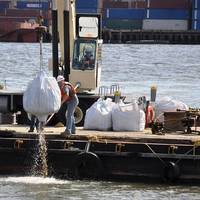
Significant challenges often require a team effort. Restoring the New York-New Jersey Harbor Estuary is one of them. A group of professionals from the Army Corps of Engineers, New York District, joined 200+ scientists, engineers, academics and restoration professionals on June 3, 2014 at a major symposium in Manhattan discussing progress restoring the NY-NJ Harbor Estuary and initiatives to continue improving the area’s ecological health, contributing to the region’s coastal resiliency.
Clean Shipping Groups Mull Potential Merger
BSR’s Clean Cargo Working Group (CCWG) and the Clean Shipping Index (CSI)— two environmental reporting initiatives for ships and ship operators—signed a memorandum of understanding to collaborate for cleaner, more efficient shipping. Through this agreement, the groups will explore a merger to create one global initiative that provides a uniform set of environmental reporting and assessment tools for cargo owners to use during procurement of shipping services. In the short term, CCWG and CSI will align more of the environmental parameters each organization currently uses. In the past few years, there has been a proliferation of market-oriented environmental initiatives for the maritime industry.
New Tools Help Port Management

BMT Asia Pacific (BMT) has launched two comprehensive tools for assessing port competition and managing commercial risk. The Port Choice Model and Port 360° evaluate the competitive advantage of a given port within its environment. Developed by BMT following years of academic research and professional consultancy assisting governments and stakeholders, the tools uniquely apply both quantitative and qualitative methodology and measure a spectrum of criteria, defined by leading economists and technical port experts.
Port Competition & Commercial Risk Assessment: BMT Launch New Tools
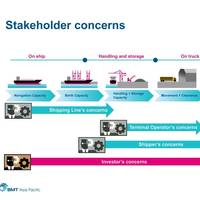
BMT Asia Pacific (BMT) have launched Port Choice Model and Port 360° to evaluate the competitive advantage of a given port within its environment. BMT explain that they developed the tools following years of academic research and professional consultancy assisting governments and stakeholders. The tools uniquely apply both quantitative and qualitative methodology and measure a spectrum of criteria, defined by leading economists and technical port experts. With the growing complexity of the port sector, BMT say that they recognised the need to assess competition with greater, critical scrutiny.
QinetiQ Updates Ship Design Software
QinetiQ Maritime’s Paramarine software, a ship and submersible design tool, has released its latest version of software including a number of new capabilities. The new functionality in Paramarine V8, developed by QinetiQ GRC, is intended to further meet the needs of commercial ship designers and builders, whilst reinforcing its capabilities in the naval market. A major addition in the latest version of Paramarine is the introduction of probabilistic damage modeling and assessment, a requirement for all passenger and cargo vessels. Coupled with its innate parametric functionality and a flexible reporting system, Paramarine aims to deliver…
FRC Test Coxswain Course For RIBs & High Speed Craft
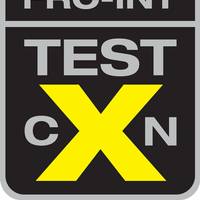
FRC International has developed a unique training course and qualification for the professional maritime sector. The Test Coxswain course is designed for both experienced crew members and technical staff who support both the specification and Test & Evaluation (T&E) of high performance craft. As the complexity and cost of high speed craft increases it has become more important that these craft are fit-for-purpose. Assessment needs to be objective, valid and reliable. Gone are the days of an individual coxswain saying ‘that's OK’ to approve an acquisition worth millions of Dollars.
New Version of Liquid Cargo Handling Simulator Software
L-3 MPRI announced the release of Version 5.0 of its Liquid Cargo Handling Simulator (LCHS) software called Safe Cargo. This release incorporates significant improvements to the performance, instructor features and configuration options currently available in the software suite. The release is fully compliant with the latest Windows operating systems and incorporates a new network communications infrastructure that improves the speed and stability of the simulator as well as system diagnostics and recovery. The configuration wizard allows an instructor to quickly define the required simulator configuration for the training exercise, selecting from multiple ship types, and assigning the student stations to be operated independently or in groups.
Investment in Design: New Solutions for LNG Tankers
With its bid for commercial marine power applications strengthened by the addition of the MT30 aeroderivative gas turbine to its range, Rolls-Royce is pushing the concept of gas turbo-electric powering in the buoyant LNG carrier market. gas turbine-based system. A saving of around 40-percent in installation man-hours is claimed by Rolls-Royce for its powering solutions using either simple cycle or combined cycle arrangements, along with significant savings in weight relative to steam turbine, dual-fuel diesel-electric and low-speed diesel alternatives, all of which have now been embraced by the LNGC sector. Capable of dual-fuel operation…







